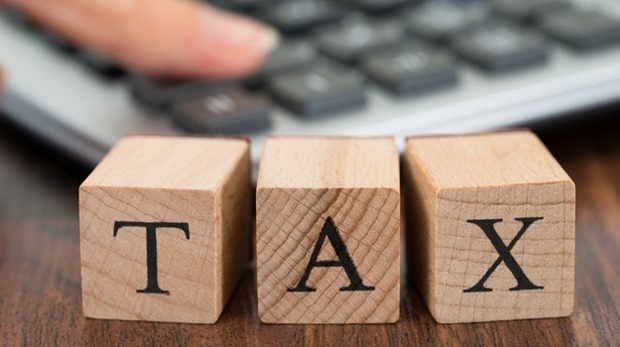Indian Entrepreneurs Expecting These 5 Critical Tax Reforms In 2021 For Seamless Taxation System

This is a guest post by Niraj Hutheesing, Founder & Managing Director, Cygnet Infotech
Over the last few years, as the discussions around financial technology (Fintech) grow stronger, taxation has often been left out of these conversations.
However, this is all set to change, with Prime Minister Narendra Modi issuing a clarion call for reforms in the Indian Indirect tax system. These reforms, when implemented, will herald in the complete digitization of the compliance process, which will ensure a paperless system, besides accurate and legitimate reporting.
Through a vision to create a technology centric tax system, the country is now facing the very real prospect of benefitting from reforms that are based on transparency, trust, technology, and productivity.
To this extent, going forward, we are now looking at faceless appeals, faceless e-assessment schemes (FAS), and the taxpayers’ charter that will bring in increased accountability, efficiency, and transparency in tax administration for businesses.
The major impacts will be noteworthy for taxpayers who have high pool of data essentially the Industry giants.
At the cusp of this revolution, some of the changes we can expect to see include:
Contents
Streamlining of Repetitive Tasks
One of the biggest challenges faced among tax experts was that of performing the same tasks repeatedly, which reduced productivity to a great extent. Tasks such as retrieving lists, generating reports, typically follow the same series of actions, and when done manually, has been found to be a repetitive, and time consuming task.
With the introduction of Robotic Process Automation, this productivity enhancing technology will aid in automation of tasks.
Through tax robots, as they are commonly known as, are gaining momentum to perform tasks like invoicing, financial closeouts, accounting reconciliation, and reporting, which streamlines operational jobs, creating a more efficient system which would give professionals time for taking informed decisions and performing value added activities.
Increased Chances Of Identifying Potential Fraud:
To create a new world order in the tax ecosystem, assuring taxpayers of complete transparency, and earning their trust will be of paramount importance.
Through the process of ‘predictive modelling’ which is powered by AI, machine learning applications can be used to analyze mounds of data, and identify potential cases of fraud, which might be overlooked when done manually.
Accurate Tax Forecasting
Advancing from simplistic modelling techniques to advanced predictive analytics, AI has already established value as a driver of accurate tax forecasting.
Algorithms, for instance, can be deployed to analyze seasonal and corporate data, to detect trends that form the base of forecasting what will happen next, in terms of sales and tax burdens.
This will give insights to the Govt. not only on the forecasts of the taxes they’d receive but also analyze the pool of data and identify the tax frauds, bringing in transparency to the process and the system. With the introduction of E-Invoice and E-Way Bills now along with GST Return Filing, the Indirect Tax System is close looped and further can be tightly reconciled.
Ease of Identifying Tax Credits and Possible Deductions
Across sectors, AI in operations is widely considered a reliable branch of computer science, and is well-known for carrying out tasks that require deep analysis of codes.
When introduced into tax technologies, this intelligence will be beneficial in understanding tax codes, and helping tax experts from business or the tax practitioners to identify key areas of savings.
Use of Analytics to Synthesize Data
With the influx of technology in revolutionizing the indirect tax reforms, we can no longer afford to carry out GST tax planning as a once-a-year exercise.
Through periodic interventions, and real-time monitoring, we can now keep pace with performance, and gather data, which can be analyzed to help in simulation and planning.
Additionally, by implementing a layer of analytics within functions of tax technology, this would go a long way in synthesizing data from multiple GST / VAT returns, to formulate a strategy that is both efficient, as well as transparent to help address existing industry challenges.
Owing to these changes, not only do they take forward the Indian government’s mission to reform the indirect tax administration, but also revolutionizes the concept of territorial jurisdiction. Today, the entire process can be location agnostic, and has the potential to set a global benchmark in field of compliance verification.
Furthermore, eliminating the need for frequent personal interactions between the tax department and the payer, these FAS considerably reduce the chances of malfeasance, and resource wastage.
As it stands, till date, cases under FAS have typically been small in nature, and those which involved limited scrutiny. Moving forward, we can expect to see it reach its full potential when used in more complex and larger cases, where transfer-pricing assessment takes place, and reducing the need for litigation.
Similar to faceless assessments and appeals, the newly introduced taxpayer charter brings about accountability within the tax department. Not only does it ensure they make timely and accurate GST tax collection decisions, but it also respects the dignity, privacy, and time of the taxpayers. With this formally in place, India joins its global counterparts USA, New Zealand, Australia, Canada, France, and South Africa in providing a transparent, fair, and efficient tax system that’s at the vanguard of financial revolution in the country.

Comments are closed, but trackbacks and pingbacks are open.